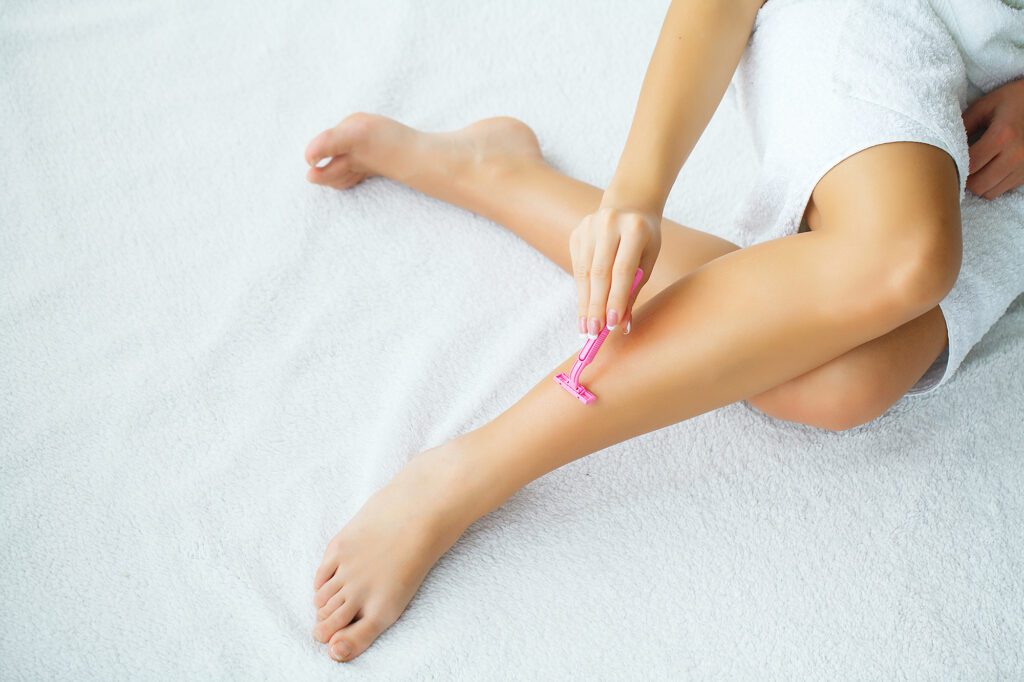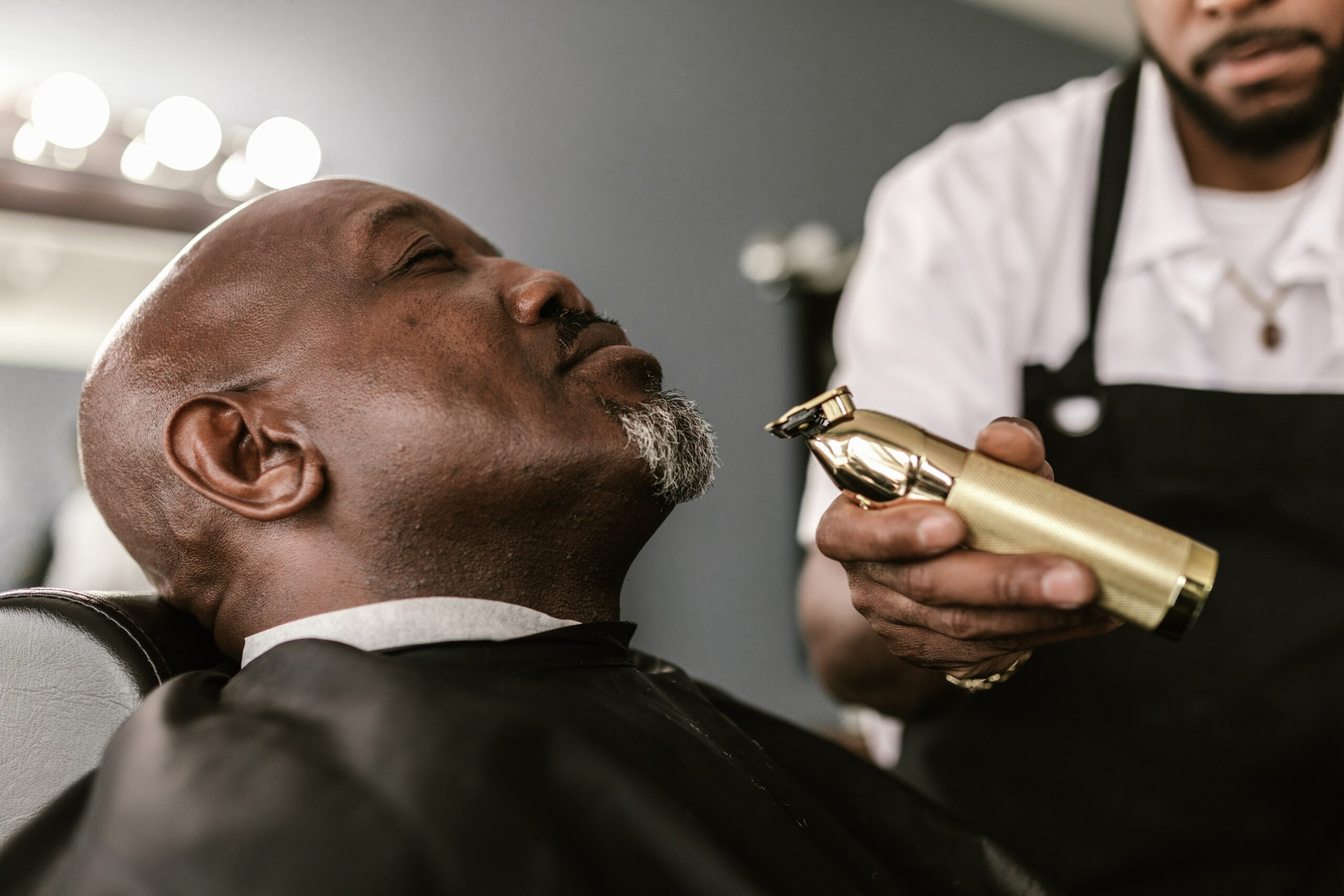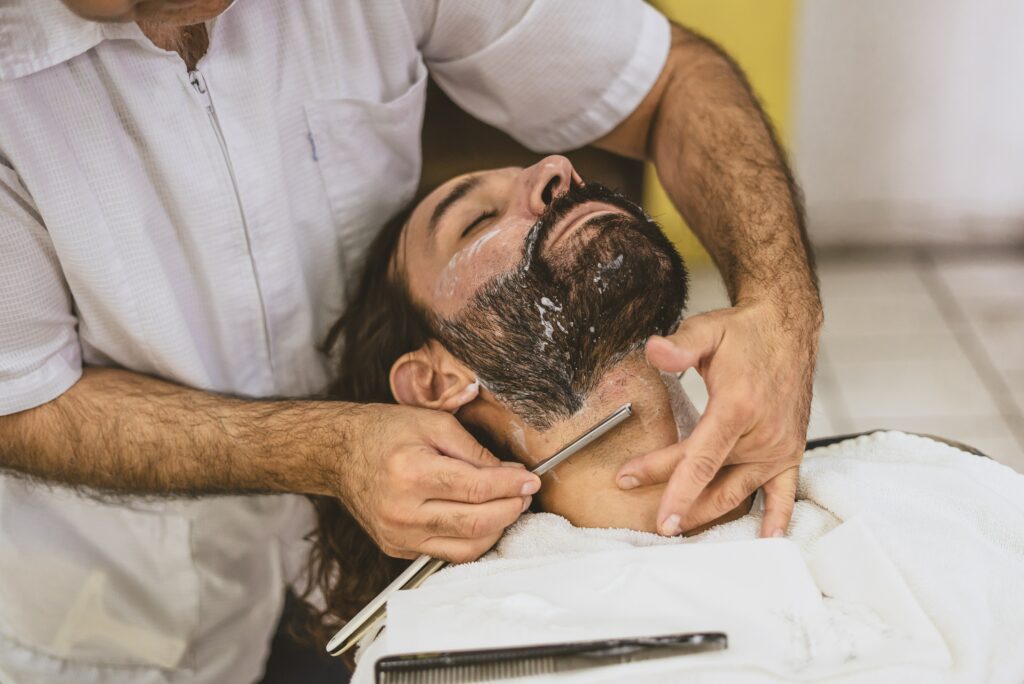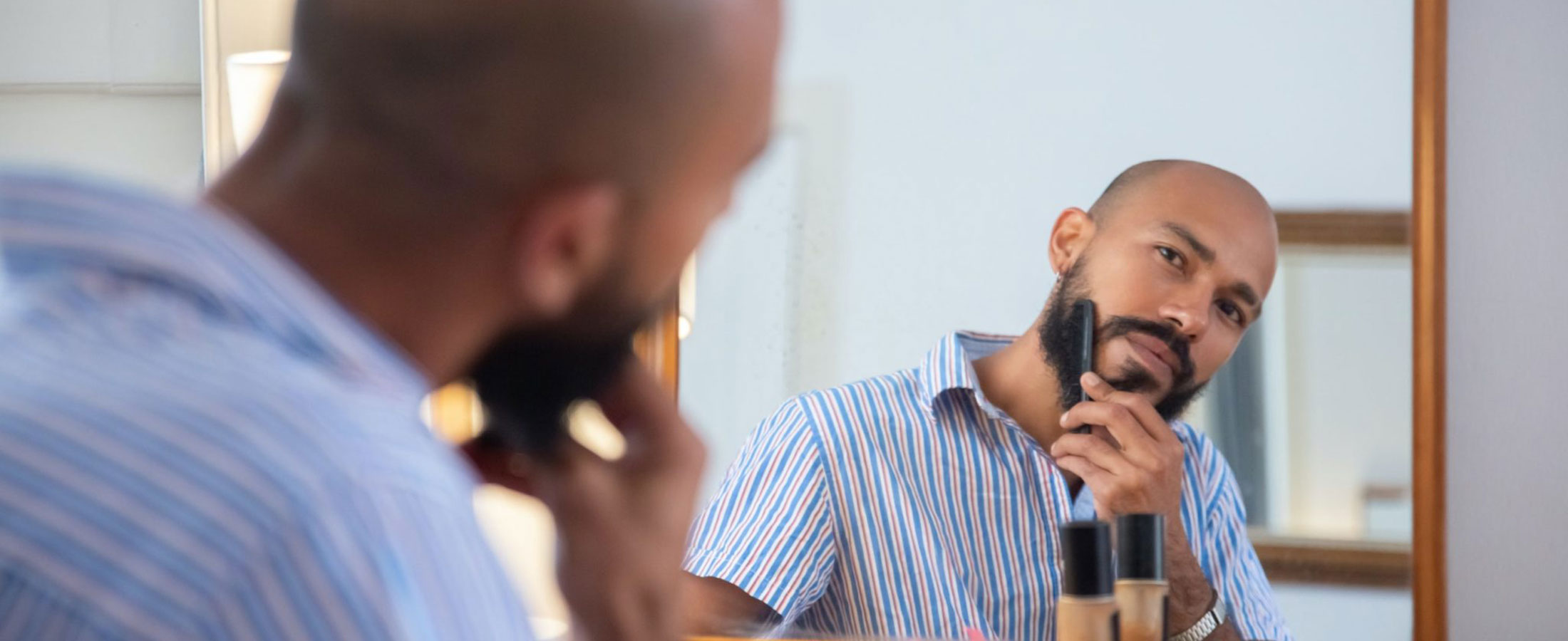In today’s healthcare landscape, personalization and respect for individual preferences and needs are paramount. One aspect of patient-centered care that often goes unnoticed but plays a crucial role is the implementation of shaving waivers. This article delves into why shaving waivers are essential in healthcare settings, how they cater to diverse cultural and religious practices, and the unique approach of Razor Bumps in providing these waivers through their telehealth services.
A shaving waiver, simply put, is an allowance given to patients to abstain from shaving as part of medical procedures or general care. This might seem trivial at first glance, but it holds profound significance in healthcare. For patients, particularly those with specific skin conditions or undergoing certain treatments, shaving can be more than just an inconvenience; it can lead to discomfort, skin irritation, or even infection. By offering shaving waivers, healthcare providers like Razor Bumps demonstrate a commitment to patient comfort and safety.
Beyond medical reasons, shaving waivers play a critical role in respecting patients’ cultural and religious beliefs. For many, shaving is not just a grooming choice, but a practice deeply intertwined with their cultural identity or religious observance. By acknowledging and accommodating these practices through shaving waivers, healthcare providers send a powerful message of respect and inclusivity. Razor Bumps, through its telehealth services, ensures that patients' cultural and religious needs are recognized and honored, thereby enhancing the quality of care and patient satisfaction.

Patients with sensitive skin or specific dermatological conditions often face challenges with routine shaving. For these individuals, a shaving waiver is not just a matter of comfort but of health. Skin conditions like eczema, psoriasis, or acne can be aggravated by shaving, leading to further complications. Razor Bumps understands these challenges and offers shaving waivers as a part of their commitment to personalized healthcare. This approach not only prevents potential skin issues but also reassures patients that their health and well-being is the top priority.
In the realm of telehealth, Razor Bumps stands out for its patient-centric approach, especially concerning shaving waivers. Through virtual consultations, patients can discuss their specific needs and conditions, ensuring that their healthcare plan includes considerations for shaving waivers if necessary. This approach not only saves time but also provides a level of comfort and personalization that traditional in-person consultations might not offer. Razor Bumps’s commitment to accommodating shaving waivers through telehealth services is a testament to their dedication to comprehensive, patient-focused care.
The inclusion of shaving waivers in healthcare practices is a small yet significant part of the broader movement towards patient-centered care. It exemplifies the shift in healthcare from a one-size-fits-all approach to one that recognizes and respects individual differences and needs. For patients seeking healthcare that aligns with their personal, cultural, and health requirements, understanding the role and availability of shaving waivers is crucial. Razor Bumps emerges as a leader in this regard, demonstrating how modern healthcare providers can effectively integrate patient preferences and needs into their services.
The significance of shaving waivers in healthcare extends beyond mere convenience. It represents a deeper understanding and respect for the patient as an individual with unique needs and preferences. Razor Bumps’s approach to offering shaving waivers through telehealth services is a shining example of how healthcare providers can and should adapt to cater to the diverse needs of their patients. By choosing services that honor such waivers, patients are not just cared for; they are valued and respected. We encourage our readers to explore more about the personalized healthcare services offered by Razor Bumps. For those interested in learning how shaving waivers can be a part of your healthcare plan, or to seek advice on any other healthcare needs, schedule a consultation with Razor Bumps. Get your Shaving Waiver today and take a step towards a more personalized, respectful healthcare experience.
Spring break is just around the corner. Soon it will be time to strip off the winter layers and bare your skin to the sun. But for some men and women, shaving the thighs or abdomen brings to mind bothersome razor bumps.
If shaving your bikini line causes skin irritation, you are not alone. Razor bumps are a common condition. The good news is you can take steps this spring to avoid bikini line razor bumps. Here’s how to get a bathing suit ready with the smooth shave you want.
Here are some steps you can take to get a silky bikini shave, without those pesky razor bumps.

First, it is important to understand why razor bumps show up along the bikini line. The hair along the bikini line is usually coarse and curly. This type of hair tends to curve as it grows. After shaving, sharpened hair tips can turn and grow right back into the skin. An ingrown hair, or multiple ingrown hairs, can result within 24-48 hours of shaving. That causes what appears as swollen, sensitive bumps on the bikini line.
Many women notice bumpy areas on their inner thighs and abdomen after shaving. If you've experienced this, here are some tips to up your shaving game to avoid bikini line razor bumps.
After shaving, consider using a topical skin treatment to soothe the skin and reduce irritation. Witch hazel and aloe vera are all-natural, over-the-counter products that are known for being anti-inflammatory and antiseptic. In other words, they calm skin and reduce bacteria. Use a cotton ball to apply these or other products to the affected skin.
“When trauma occurs to your skin, it reacts by becoming inflamed and bumpy,” explains dermatologist Dr. Mona Gohara, MD.
If you already have a case of razor bumps in your bikini area, it’s not too late. Here are some tips for dealing with skin irritation after shaving.
In some cases, razor bumps on the bikini line can become serious. If your razor bumps become worse over time, don’t go away, or are accompanied by other symptoms such as severe pain or are interfering with your daily activities, it might be time to talk to a doctor.
Now you know how to avoid or get rid of those unsightly and uncomfortable bumps from shaving. Even though the bikini line is a high-risk area for razor bumps, you can get the smooth shave you want with a little extra effort. Try these tips at home and be ready for your spring break out.
If razor bumps have you bothered and you want to talk to an online doctor, Razor Bumps, Inc.’s board-certified physicians are available now through easy virtual video visits. Find out more by chatting with us now.
Disclaimer: The contents of this article are for informational purposes only and do not constitute medical advice. The information, graphics, and images on this site are not intended to substitute diagnosis or treatment by a medical professional. Always seek the advice of a licensed physician for any questions you may have regarding a specific condition.

Have you ever noticed bumps on your face after shaving? If so, perhaps you’ve heard of razor bumps and assumed that’s what those little ingrown hair-like cysts were. But were they razor bumps? And what do razor bumps look like on the face?
Razor bumps look like small ingrown hair cysts. They may vary in color depending on a person’s skin tone. Typically, razor bumps are raised and irritated. The skin bump may look red, pink, or a darkened color. Sometimes, they become infected and may look yellow or whitish in the center.
So how do you know if you truly have razor bumps? Moreover, what can you do if it looks like razor bumps on your face? Keep reading if you or someone you know has had these facial bumps and you want to know more.
Razor bumps is the name of a skin problem that shows up on the face and neck after shaving. Usually, these bumps are small. Razor bumps typically measure only 2 to 5 mm in diameter.
If you notice bumps on your face, you can look closely at the face with a mirror. The small cysts will appear near hair roots. Watch for signs of irritation at the hair root. Signs of razor bumps on the face can include:
Facial hairs cut with sharp edges, like a razor blade, can grow back into the skin. As a result, a shiny hump or cyst forms on the face. They are also called shave bumps or barber’s bumps.
Men with coarse or tightly curled hair see razor bumps more often. This hair type grows easily back into the skin after shaving. More than half of African American men have had this condition.
Only a licensed physician can diagnose razor bumps. If you have signs of these barber bumps and they don't go away, it's best to talk to a doctor.
The medical term for razor bumps is Pseudofolliculitis Barbae. Traumatic folliculitis of the beard is another name for it, even though razor bumps can appear in other body parts. The condition is caused by shaving. Hence the name, razor bumps.
Bad shaving habits can worsen razor bumps. For example, pulling the skin tightly or pressing on the razor while shaving can cause hairs to be cut too short. It can aggravate razor bumps. Also, using dull razor blades can cause trauma to the skin. They pull the hair shaft during shaving, which can worsen razor bumps.
Also, men who suffer from razor bumps find that shaving too frequently makes matters worse. If you suspect you have razor bumps on the face, you should avoid shaving the affected area until it is healed.

You can do several things if you think you have razor bumps. Some you can do at home by yourself. Others may require you to see a doctor.
The easiest and most effective way to treat razor bumps is to stop the cause of the problem. Yes, you guessed it. That means to stop shaving. Allowing facial hair to grow freely can stop the irritation. According to the American Osteopathic College of Dermatology, letting a beard grow naturally is a 100% effective treatment.
Another solution is to train the hair. Some doctors recommend brushing facial hair to encourage it to grow a certain way. Doing so may decrease razor bumps.
A beard brush can help tame unruly hairs. Starting near the ears and brushing down toward the chin in smooth strokes can encourage hairs to grow out straight. Men should brush face hair at least once a day.
The third solution for razor bumps on your face is to try changing up your shaving routine. Try different products or methods to reduce bumps.
Softening the hairs before shaving in the shower or with a hot wet towel on the face helps. Men can also look for lubricating shave gels or try an electric razor. Different methods can help lessen bumps.
If you try these at-home solutions but still have a hard time with razor bumps, then it might be time to talk to a doctor.
So now you know how to prevent bothersome bumps on your face and how to tell if you’re dealing with razor bumps. The ingrown hair-like cysts on their face can vary slightly from person to person. Still, razor bumps are usually swollen, discolored, and bothersome.
If you are still unsure you have razor bumps on your face and want to talk to an expert, go ahead and chat with us to find out more about Razorbumps, Inc. We have top board-certified physicians available to see and treat your skin problem by video appointment now. To find out more, click BOOK APPOINTMENT.
Disclaimer: The contents of this article are for informational purposes only and do not constitute medical advice. The information, graphics, and images on this site are not intended to substitute diagnosis or treatment by a medical professional. Always seek the advice of a licensed physician for any questions you may have regarding a specific condition.
Many Americans live paycheck to paycheck. As a result, being out of work due to illness or layoffs can have devastating effects. This cold and flu season, workers are worried about getting sick. Yet, some have a bigger concern. Men with facial hair could face suspension for not shaving.
Some jobs require workers to wear N95 respirator masks on the job. And according to authorities, the masks are not effective when worn over full beards. Consequently, many employers have policies that require employees to shave. Those who do not comply with company mandates could be suspended for not shaving.
You may wonder who these rules apply to or what workers can do about it. Here is what employees should know.

Men grow beards for many reasons. In fact, when they are required to shave, it can feel like a violation of personal freedom.
From a legal perspective, experts agree that employers can require men to shave as long as it does not:
To explain, here are a few examples. If an employer required a man to shave a beard that was grown for religious observance, it would be considered a violation of the right to practice religion. If an employer required a man to shave even though it aggravated or caused a medical condition, that would be an instance of a policy that caused undue hardship.
For jobs that do not require N95 masks, it may be unlawful to have policies prohibiting facial hair. Furthermore, according to the U.S. Equal Opportunity Commission (EEOC), a policy prohibiting beards on the job can be racially discriminatory. A "no-beard" policy may be unlawful if it is not job-related and harms the employment of African-American men (who have a predisposition to a skin condition that causes severe shaving bumps). You can read the EEOC's statement here.
Workers who think their job is doing something wrong should talk to their boss about their concerns.
Employers considered first-responders, like emergency medical response and law enforcement, might require N95 respirator masks for worker protection. In other words, jobs that regulate N95 masks and can suspend workers who do not shave include:
Men in these jobs may find themselves in tough situations if they can't shave.
A lot of men suffer from skin conditions caused by shaving. In particular, approximately 60% of African-American men suffer from a medical condition called Pseudofolliculitis Barbae, known as razor bumps. You can read more on Psueodfolliculitis Barbae here. In most black men, shaving causes swollen, painful bumps that can scar their faces over time. A 100% effective treatment is to let the beard grow.
Generally, employers allow exemptions. A medical excuse from a doctor can prevent suspensions in many cases. A doctor can confirm that a worker cannot shave due to a medical condition, like razor bumps. Then the employee would be allowed to grow their beard and avoid suspension.
A recent story made national news from the police department in Maryland's Prince George County. Due to an N95 mask requirement, the police department changed its policy to require clean-shaven faces. In this case, men with razor bumps were allowed medical exemptions. The police chief said in a statement that his department encouraged officers to come forward with medical waivers. You can read more about the officers in Maryland here.
In short, shaving waivers are encouraged for workers who cannot shave due to medical conditions. In some cases, employees can avoid suspensions or other disciplinary action when showing that shaving causes undue hardship. While employers can legally require shaving, it should not violate civil rights or aggravate a medical condition.
Have you experienced problems from shaving for your job? If razor bumps have you worried, you need to talk to one of our doctors. Meet a top board-certified physician online through a convenient virtual video visit. Find out more by chatting with us now.
Disclaimer: The contents of this article are for informational purposes only and do not constitute medical advice. The information, graphics, and images on this site are not intended to substitute diagnosis or treatment by a medical professional. Always seek the advice of a licensed physician for any questions you may have regarding a specific condition.
When you picture a man in uniform, most likely, he’s clean-shaven. That’s especially true if you imagined a military uniform since the U.S. Army requires soldiers to shave. However, men with certain skin conditions may be eligible for a military shaving waiver that excuses them from shaving daily. So how do you get a shaving waiver for the National Guard?
Generally, men in the U.S. military treated by a licensed medical professional for shaving-related skin problems may be given a shaving waiver, called a shaving profile. A doctor, dermatologist, nurse practitioner, or physician assistant must certify that the soldier suffers from a medical condition requiring them to grow their facial hair. A neatly trimmed beard shorter than a one-quarter inch may then be allowed.
Wondering if a military shaving waiver is right for you? Read on to find out why soldiers are required to shave and how you can get a profile in the National Guard.

A profile is an injury or condition that prevents soldiers from performing their duty. For instance, a shaving profile means a medical diagnosis means a soldier cannot shave daily. Instead of shaving, men may trim facial hair neatly with scissors or clippers.
A shaving profile is essentially a medical recommendation, though. Commanders have the final say in whether a shaving profile will be honored or not.
The most common reason for shaving waivers is a skin problem called pseudofolliculitis barbae (PFB). This condition causes painful bumps to form that can scar a man’s face permanently. The National Institutes of Health (NIH) found that 83% of African American men suffer from PFB.
The National Guard soldiers serve the military by supplementing U.S. Army units. Army regulation 670-1 1-8 2(c) requires men to keep faces “clean shaven while in uniform or civilian clothes on duty.” That means that soldiers have to shave each day, which can worsen skin problems or cause permanent damage for some men.
With a shaving waiver, men can keep facial hair groomed very short, ⅛ to ¼ inches. A shaving profile is not an excuse to grow out a beard. Furthermore, tyling of facial hair is never allowed.
Officers can stop soldiers in uniform and ask to see their profiles. So it is important to keep required paperwork on hand at all times.
The U.S. Army Medical Services Technical Bulletin 287 tells more about this topic. After shaving, sharp hair tips can curl and grow back into the skin. This trauma to the skin can hurt. It is also itchy. Pockets of pus may also form when bacteria trapped under the skin multiply. Cases of PFB may be mild to severe.
Soldiers who experience PFB should see a doctor. According to the Army bulletin, “virtually all individuals with PFB will require a profile for the entire face and neck at some point in therapy.”
A military shaving profile may state how often a man is can shave and how long the hair should grow out to avoid skin problems. A profile is re-evaluated at an officer’s request or if the soldier’s condition changes.
Now you know if a shaving profile for the National Guard might be right for you. It is best to consult a licensed physician about any medical condition. If you still have questions, now is the time to talke to a specialist.
Would you like to talk to a caring doctor about your skin problems? To meet a top board-certified physician, chat with us now.
Disclaimer: The contents of this article are for informational purposes only and do not constitute medical advice. The information, graphics, and images on this site are not intended to substitute diagnosis or treatment by a medical professional. Always seek the advice of a licensed physician for any questions you may have regarding a specific condition.
Some employers require shaving. A clean-shaven face is part of the uniform. Many law enforcement jobs prohibit beards. So it’s normal to wonder - can you have a beard as a security guard?
Typically, security guards or security officers must maintain a professional appearance on the job. Often that means a shaven face or well-groomed beard. Security guards can be excused in some cases, such as religious or medical exemptions.
If you’re thinking about a security job but cannot shave due to personal beliefs or skin problems, here’s what you should know.

The truth is that each business has different requirements for grooming and appearance. Employers want to put their best face forward. And when it comes to providing security, men are expected to appear respectable and professional.
Here are some of the rules from top names in private security:
Most security jobs require shaving as a part of their grooming standards.
Men who cannot shave their facial hair for religious or medical reasons can talk to their supervisor about the process of getting a shaving waiver. To learn about what a shaving waiver is, read more here.
Security guards who suffer from damaging skin conditions with frequent shaving may need a shaving waiver.
A medical excuse is needed in some situations. Shaving weekly may cause security guards to experience:
Not only can these be painful, but they are also unattractive. Symptoms may range from mild to very serious. They can also lead to scarring or other permanent effects.
Security officers who have these problems from shaving should see a doctor. They may need a medical excuse.
Thanks to the internet, seeing a doctor is now easier than ever. And virtual visits online are less expensive than driving to a specialist’s office.
Getting an appointment for a shaving waiver is simple. The first step is to find a doctor. Telemedicine doctors can treat patients through smartphones, tablets, or computers. Seeing an online doctor is the fastest way to get a shaving waiver.
A telemedicine appointment should include a physical exam with the doctor that focuses on the skin problem. The doctor will ask questions about the symptoms. And they may discuss treatment options. After the appointment, the online physician can provide a medical excuse showing why an officer should avoid frequent shaving.
So if you are considering a job in security, now you know what to expect when it comes to shaving. Many employers will have rules about growing facial hair. But you may still be able to grow a beard if there is are medical concerns.
Would you like to talk to a caring doctor about your skin problems? To meet a top board-certified physician, chat with Razor Bumps, Inc. now.
Disclaimer: The contents of this article are for informational purposes only and do not constitute medical advice. The information, graphics, and images on this site are not intended to substitute diagnosis or treatment by a medical professional. Always seek the advice of a licensed physician for any questions you may have regarding a specific condition.
Shaving can cause problems. Some men who shave develop serious skin conditions. As a result, they may have to see a physician for a shaving waiver. But can you get a shaving waiver completed online without having to go to the doctor's office? The answer is yes.
Men who require a shaving waiver can obtain one online. Video visits with online doctors can provide patients with routine medical care such as exams, treatment, and help with employer medical forms, like shaving waivers.

If you need a shaving waiver, you will want to know how to make an appointment. You may also need to know how much it may cost.
Some employers and training programs, including the military, police, and security, have grooming standards and policies that require men to shave their faces. But shaving may cause scarring, excessive dryness, ingrown hairs, or a condition called pseudofolliculitis barbae that you can read about here.
When shaving causes skin complications, a shaving waiver can protect employees. Employers may refer to a shaving waiver form by different terms, including:
You can read more about shaving waivers in this article.
A shaving waiver must come from a licensed physician. Online doctors who provide telemedicine services can provide shaving excuse letters for their patients who meet the conditions. Virtual physicians see their patients through a video visit. Then they digitally complete and sign forms required by employers.
There are just a few steps to getting a shaving waiver online.
These five steps are simple and painless. In most cases, men can obtain the online shaving excuse within a couple of days.
A shaving excuse letter or “no-shave waiver” is usually completed as part of a doctor’s visit. If your insurance covers the cost of the doctor visit, then it may be free.
Still, if you do not have insurance or your insurance will not cover the visit, the cost of an online shaving waiver is around $50.
Sometimes men do not have a doctor they see regularly or cannot wait for the next available doctor's appointment. Travel time and cost are also factors when choosing to see a doctor. When it is not possible to get to a doctor near you, the next best thing is a video visit. Many patients are very happy with telemedicine services (seeing a doctor online) because they are convenient and inexpensive.
Through a video visit, the online doctor can see and hear the patient. They can ask and answer questions. Doctors still examine the patient to make a diagnosis. And they can refer patients to a laboratory or outpatient center if any tests are needed. When it comes to shaving excuse forms, whether completed online or in person the paperwork is the same.
But watch out! Patients must be careful about choosing an online doctor. Not all virtual doctors’ offices are the same. Some telehealth services do not schedule you to see a doctor. They may take your information and payment to complete a shaving waiver, but never actually schedule you with a doctor.
We offer live, video visits with real doctors. Our caring experts offer the highest quality service. To get a shaving waiver online from a top board-certified physician, book an appointment now!
Public servants, such as police officers and firefighters, have certain rules when it comes to appearance. Police departments usually have strict grooming standards that officers must follow. Perhaps you want to go to a police academy but you need to know- do police officers have to shave?
Generally speaking, police officers and those in training are required to shave. Individual department policies on facial hair grooming may vary. Yet in most cases, active-duty officers are restricted from growing full beards. Mustaches are allowed under certain conditions.
If you are considering police work and wonder if there are any exceptions, here's what you should know.

Policies about beards on officers in uniform can vary from state to state. Some departments allow facial hair, while many do not.
Most often the requirements for police officers is similar to those of the U.S. military. In other words, part of the uniform includes a clean-shaven face.
Still, there are some exceptions to the rules. In some cases, men may not have to shave their faces. A few examples include:
Typically, a police officer must complete documentation or provide proof to gain exemption from shaving requirements. A "No Shave Waiver" is an example of a medical excuse form that shows why a police officer cannot shave his beard.
Rules about police officers and shaving go back decades. The pandemic has reminded officers and other first responders of one of the reasons for shaving.
Many first responders have to wear fit-tested N-95 masks. For the most part, the masks are not safe if they are worn over a beard. In April 2020, 25 police officers that refused to shave were put on leave for their safety.
Another reason that police officers are required to keep a clean-shaven face is for a professional appearance. On the job, cops want to look neat and respectable. The public could view officers with beards as unkempt.
Appearances and safety are two of the main reasons police officers are required to shave. Still, many disagree with shaving policies. Men can trim and brush their beards to appear clean and tidy. And the Centers for Disease Control and Prevention (CDC) even published a guide to facial hairstyles, proving that men can still wear an N-95 mask with some facial hair.
Officers in the police academy or police departments who cannot shave because of a medical condition, such as severe irritation or pseudofolliculitis barbae, should talk with a doctor about getting an exception. A medical form to show employers or organizations why an individual cannot shave is a shaving waiver.
To get a shaving waiver, the easiest and best way to get a shaving waiver is to book an appointment with a telemedicine provider. Online doctors who treat patients through video visits make it convenient to get a shaving waiver quickly.
A telemedicine appointment will include an exam and interview about the problems caused by shaving and a recommendation by a qualified physician. The doctor can then complete the form online and send it digitally to the patient. Thanks to telemedicine, patients can now see a doctor without leaving home.
A licensed healthcare provider is the only one who provides a medical excuse when needed. Police officers or those in the police academy facing strict shaving policies should talk with a doctor about the options. Telemedicine appointments are inexpensive and convenient.
Our caring experts can help answer your skin questions. To meet a top board-certified physician, click to book an appointment today.
Disclaimer: The contents of this article are for informational purposes only and do not constitute medical advice. The information, graphics, and images on this site are not intended to substitute diagnosis or treatment by a medical professional. Always seek the advice of a licensed physician for any questions you may have regarding a specific condition.

A shaving waiver is a type of medical release or exemption form. Men who have skin conditions may need this form for work.
Shaving waivers are also called “no-shave waivers.” They are for men with certain skin conditions. Sometimes shaving causes serious skin problems. A medical doctor can complete this release to show why a man should not be required to shave his face.
Why would an individual need a shaving waiver, and where can you get one?
The shaving waiver shows employers and supervisors of organizations that it would be unhealthy for a man to shave. A shaving waiver must be necessary to prove that an individual should not have to shave for medical reasons.
For some men, facial shaving causes:
According to to-dictate-the-terms-of-m/" rel="noreferrer noopener">Kennard Law P.C., “from a legal perspective, employers may require male employees to shave as long as it does not infringe on their civil rights or cause undue hardship.” For this reason, it may be necessary to show proof that shaving creates a problem for the individual.
Speak to a virtual doctor today about a shaving waiver!
Some men in sales or marketing, law enforcement, or sports may be required to shave their faces. Other jobs that require men to be clean-shaven include those where employees may be exposed to fire or hazardous chemicals and would be required to wear respirator equipment.
In the military, this waiver is also called a military shaving profile. The Department of Defense expects its male members to maintain zero visible facial hair, other than a neatly maintained mustache, when in uniform. This requirement stems from the five elements of dress and personal appearance: neatness, cleanliness, safety, uniformity, and military image.
In some cases, when shaving causes serious health concerns to the individual, this medical form may be necessary.
Do you need a shaving waiver? You can schedule a virtual doctor visit with one of our board-certified physicians about a shaving waiver.
We are now offering evening and weekend appointments. My Virtual Physician treats skin conditions and much more. Our caring experts provide telemedicine services for your healthcare needs, all from the convenience of your home.
If you have suggestions for other topics you want to read about, let us know! Don’t forget to follow us on social media.

Masks have become a permanent accessory for many U.S. workers. Unfortunately, facial hair makes masking difficult. Some workers required to wear personal protective equipment, like respirator masks, find it especially hard. You may even wonder, how can men with full beards wear N95 masks?
An N95 respirator mask is a protective device made to fit tightly against the face to filter 95% of particles from the air entering the nose and mouth. As a result, men with full beards cannot wear N95 masks safely or effectively. Facial hair that comes between the skin and mask edges prevents a tight fit and good seal.
So what can men do if they have facial hair but need respiratory protection? There are options for men in such situations. Read on to find out.
Many jobs require respiratory protection. Here are just a few of the workers that may be required to wear an N95 mask in on-the-job situations.
In many of these jobs, facial hair is not allowed. Therefore, tory?id=69916196" target="_blank" rel="noreferrer noopener">some men choose to shave their facial hair.
Unfortunately for some of these workers, going clean-shaven causes problems. Sometimes shaving causes adverse effects.
The face and neck are sensitive parts of the body. Facial shaving may result in some very uncomfortable skin conditions. Problems created by shaving may include folliculitis, painful skin infections, and hyperpigmentation. For men suffering from significant health conditions like these, limiting or even avoiding shaving may be necessary.
A shaving waiver, also known as a shaving profile or “no-shave waiver,” can help individuals with certain conditions. A shaving profile is a medical release or exemption form. The document, completed by a physician, explains why a man should not be required to shave his face due to health concerns.
Shaving waivers allow men to forgo shaving and get the right respiratory protection for them. Men with facial hair do not have to risk inhaling unsafe vapors.
Some respirator masks do not require a face seal. These types are a better option for bearded employees.
Specifically, positive-pressure respirators worn over facial hair or beards work to filter the air. A hood-and-helmet type mask uses continuous airflow to protect employees.
One example that is available to workers is called the Powered Air Purifying Respirator (PAPR) mask. This loose-fitting respirator uses a blower to pass air through a filter before sending it to the face. Typically, PAPR masks are lightweight and battery-operated. Also, PAPR masks do not require Fit-Testing.
One drawback is their cost. Most employees would not want to invest in their own PAPR. Those looking for a PAPR respirator can purchase a simple version online for around $100. However, some are upwards of $1000. Batteries and chargers may double the expense.
Although these masks are more costly, they offer superior protection. According to tomerics/" target="_blank" rel="noreferrer noopener">this article by the Center for Disease Control and Prevention (CDC), a PAPR mask may offer an Assigned Protection Factor (APF) of 1000, where an N95 respirator only has an APF of 10. The higher the protection factor, the safer it is.
The use of a PAPR mask does require a physician’s medical evaluation. It is a respirator, and therefore OSHA’s requirements to evaluate an employee before requiring the mask applies to this type.
Men with full beards can find respiratory protection that won’t cause health problems or skin conditions. The first step is a medical evaluation by a licensed physician.
Men interested in finding out if a PAPR mask or shaving waiver for their employer would be right for them should talk to a doctor.
My Virtual Physician now offers consultations for shaving waivers in some states. Fill out the contact form below to speak to one of our board-certified physicians about a shaving waiver.